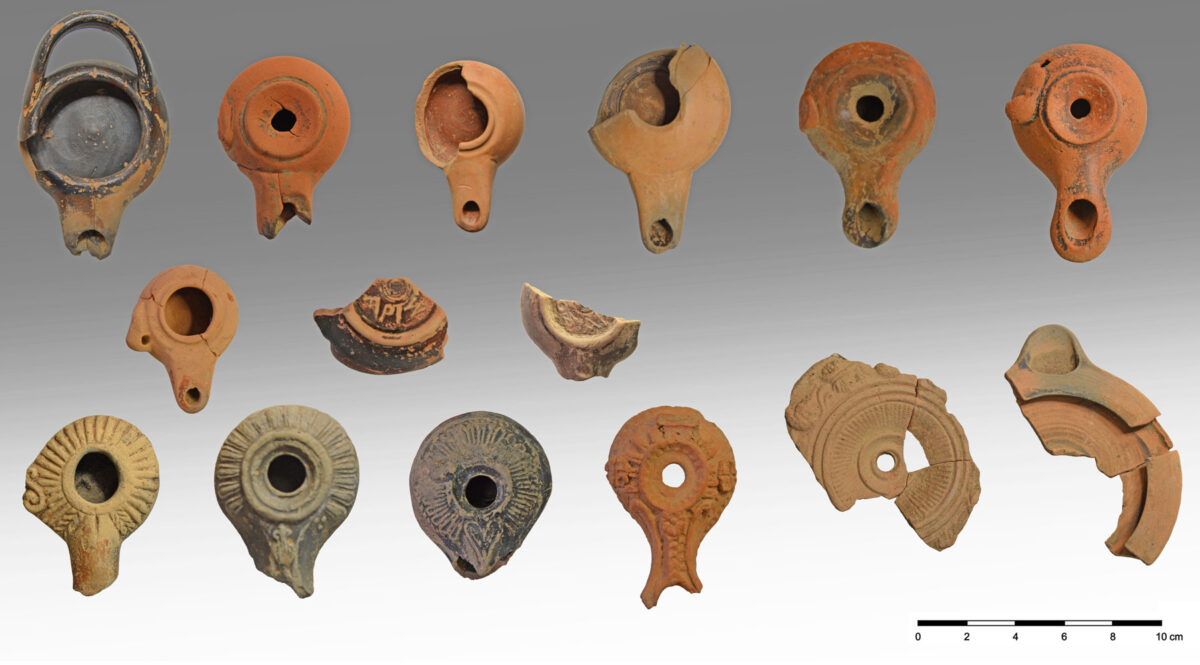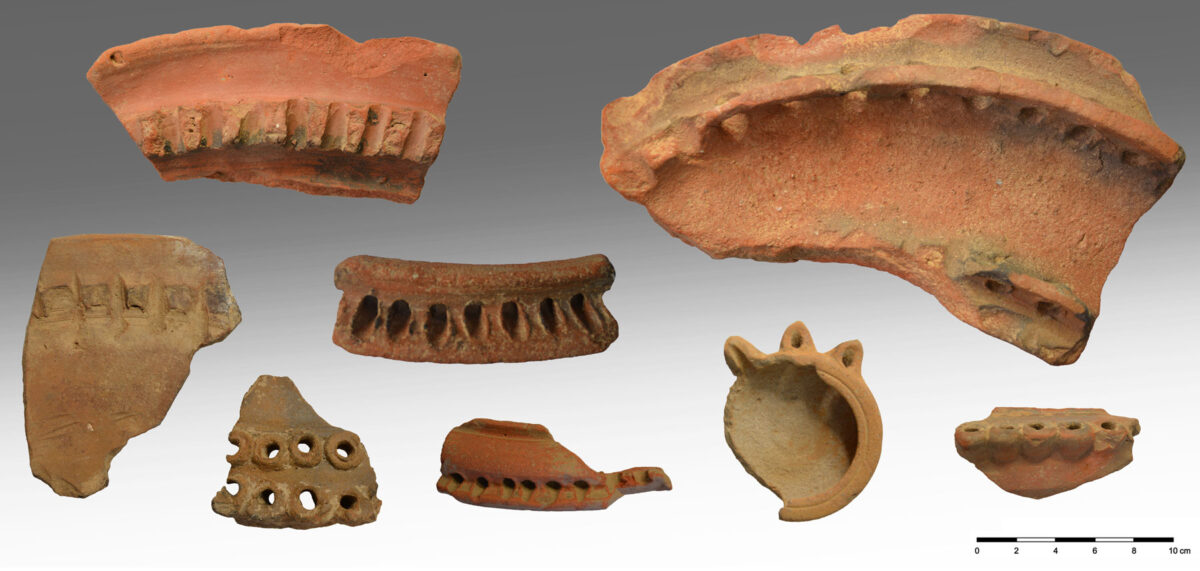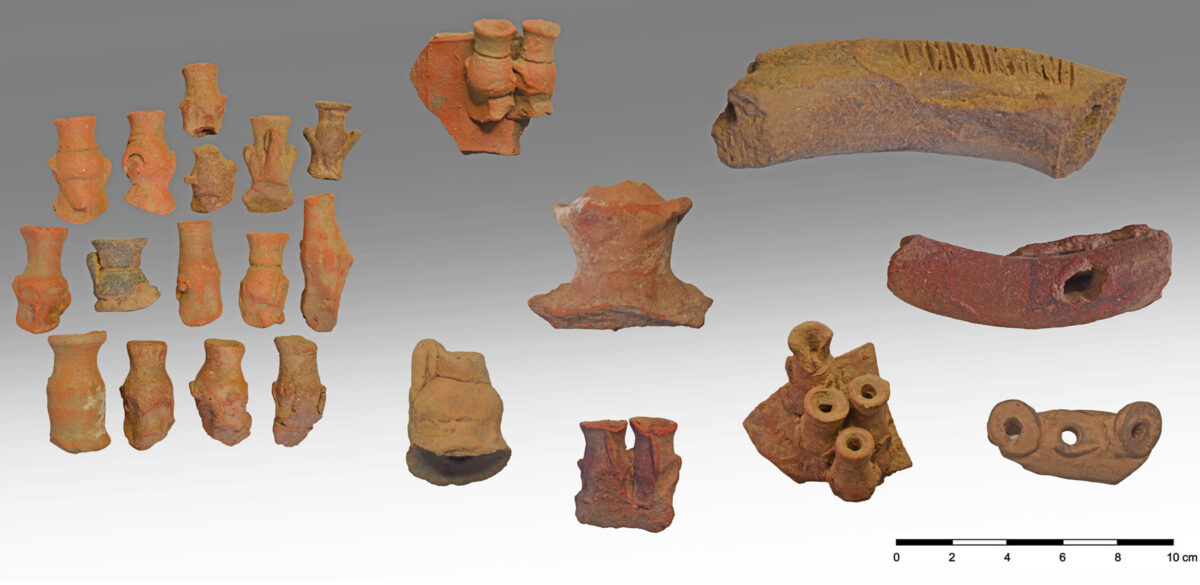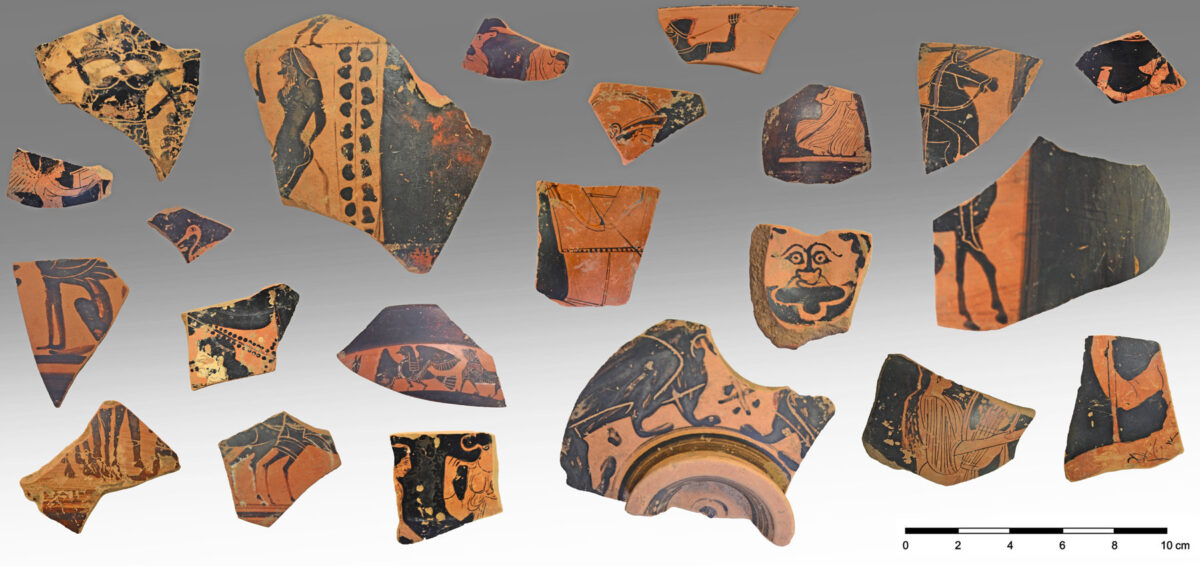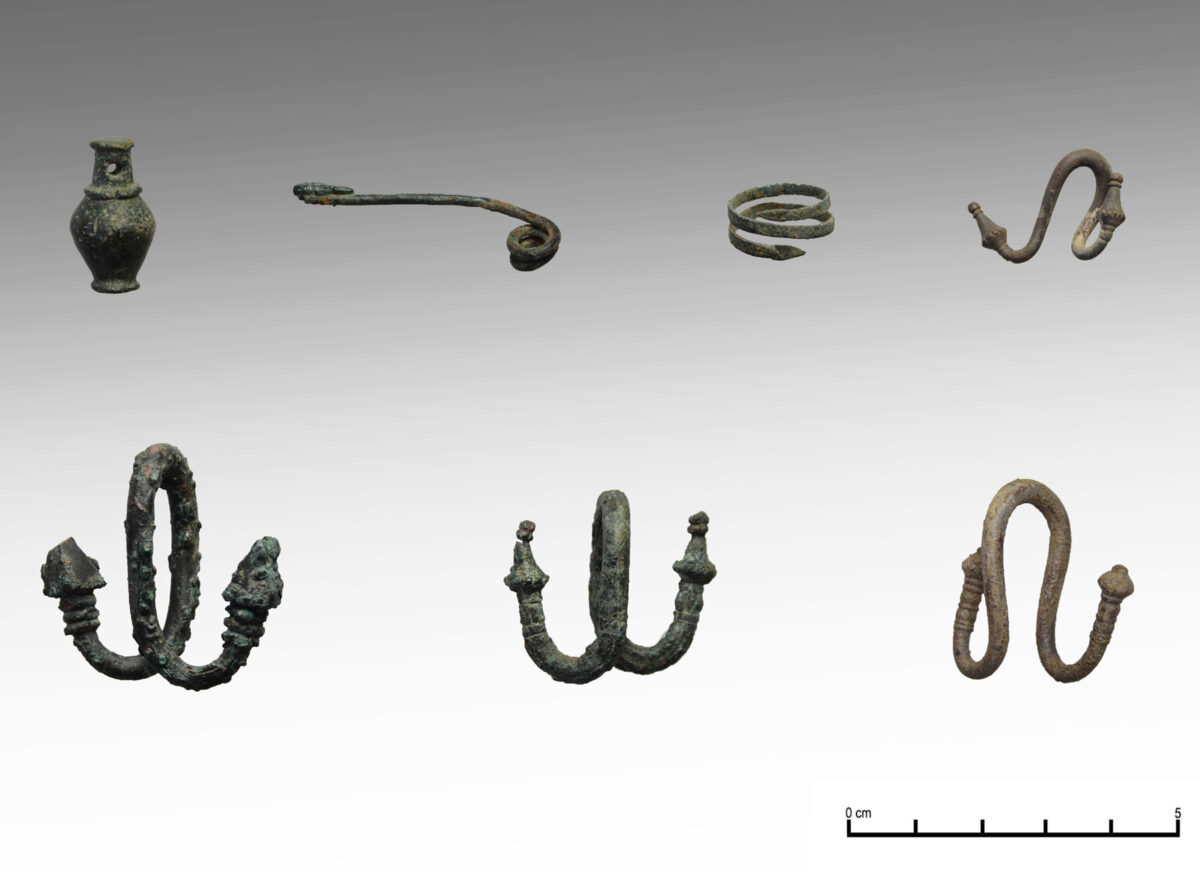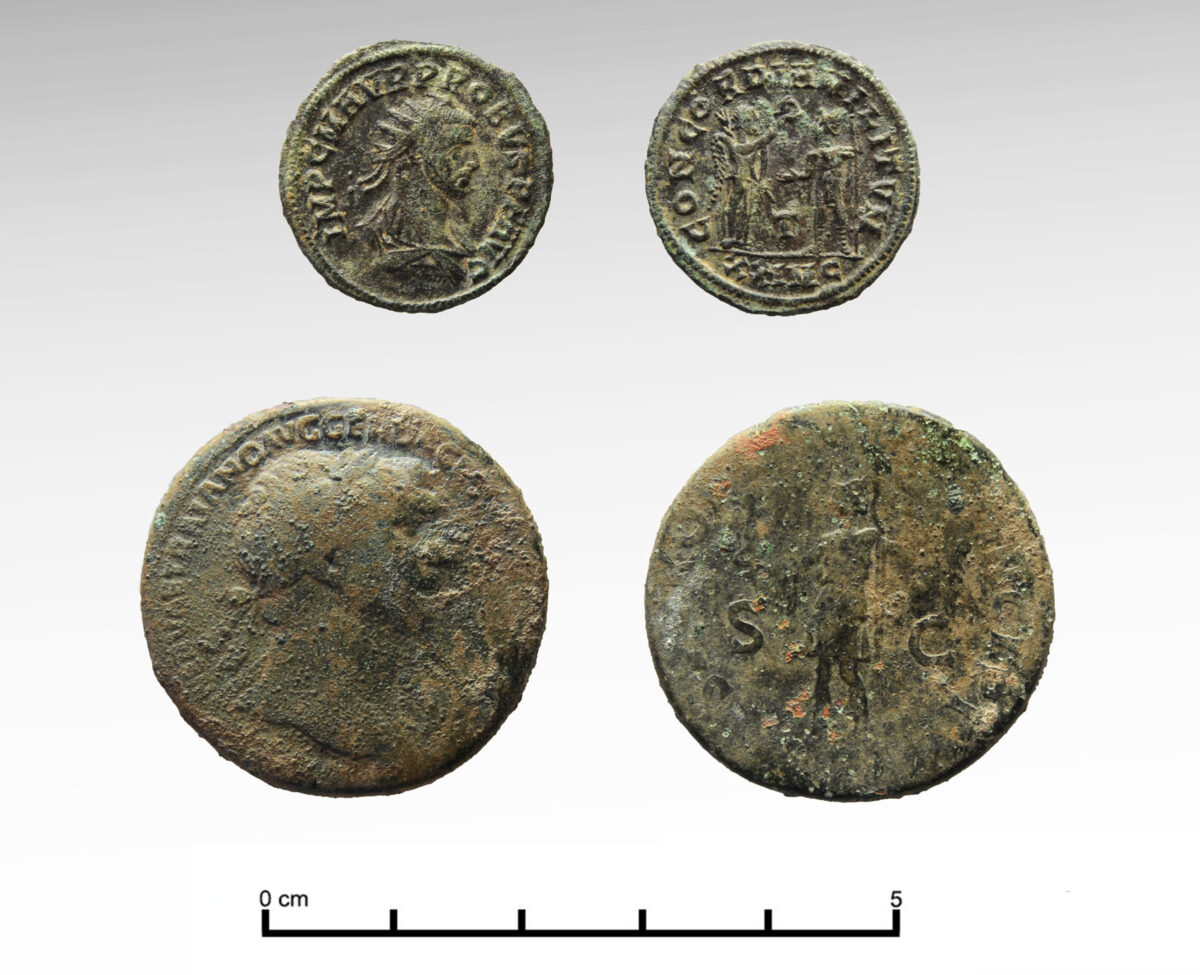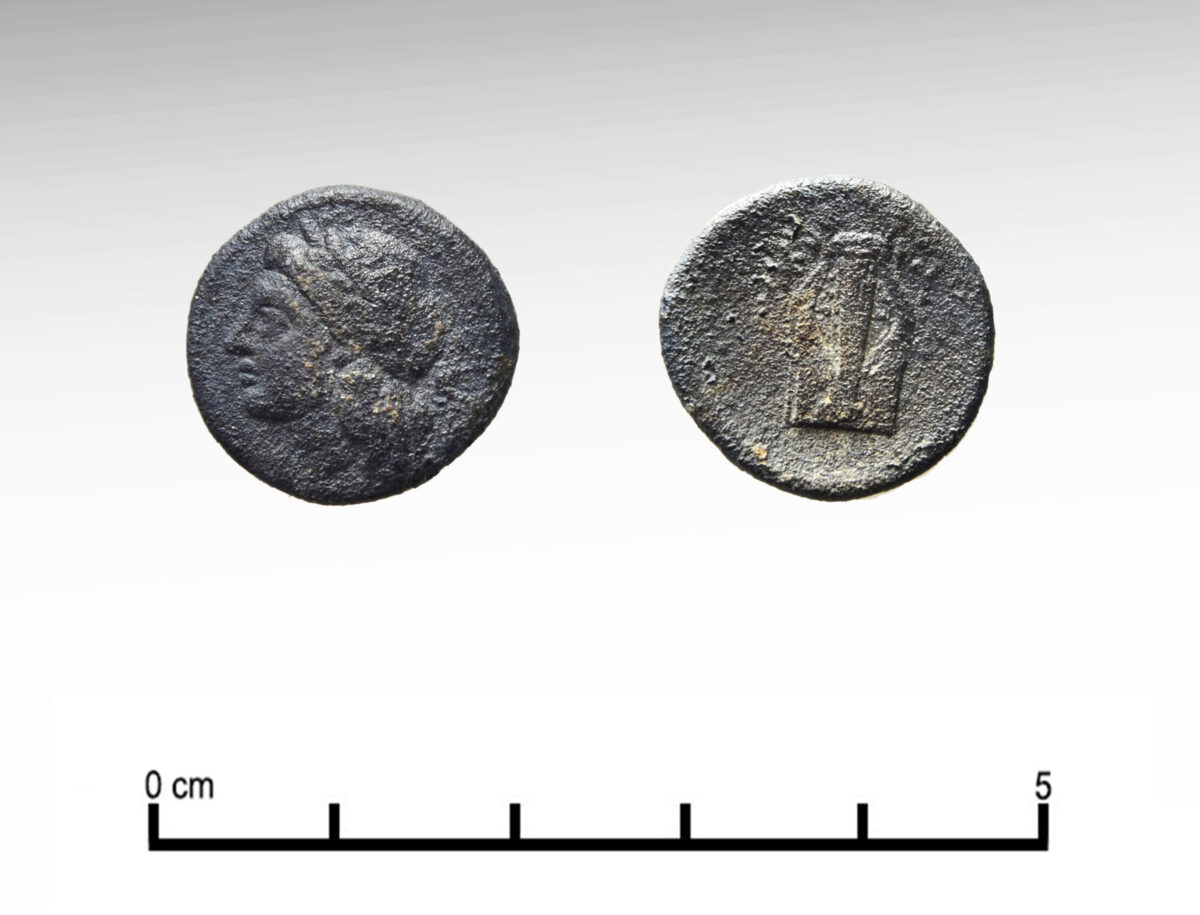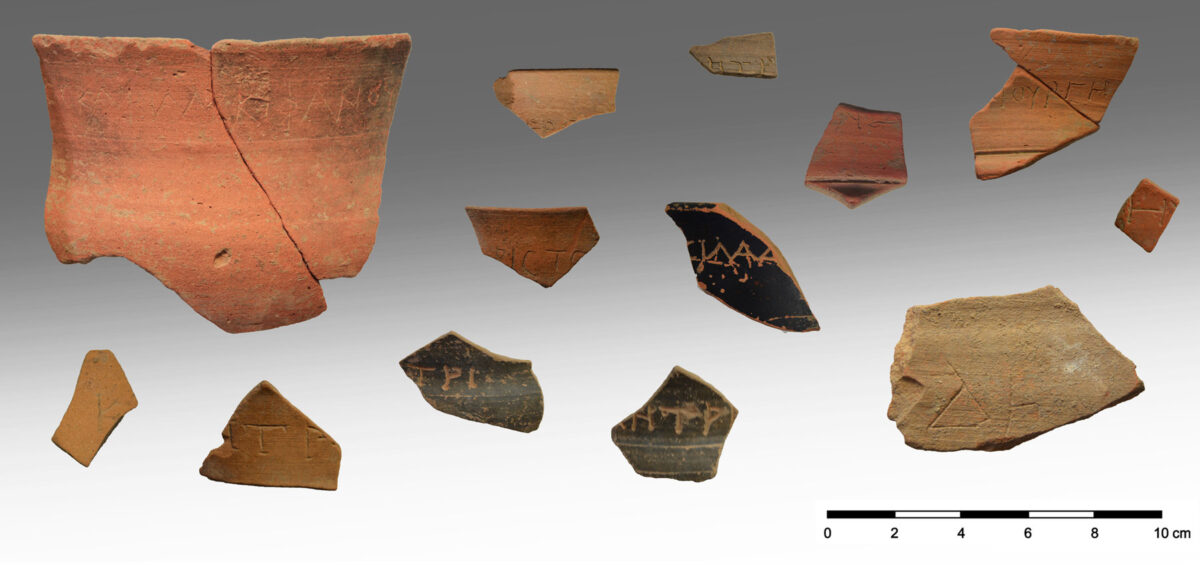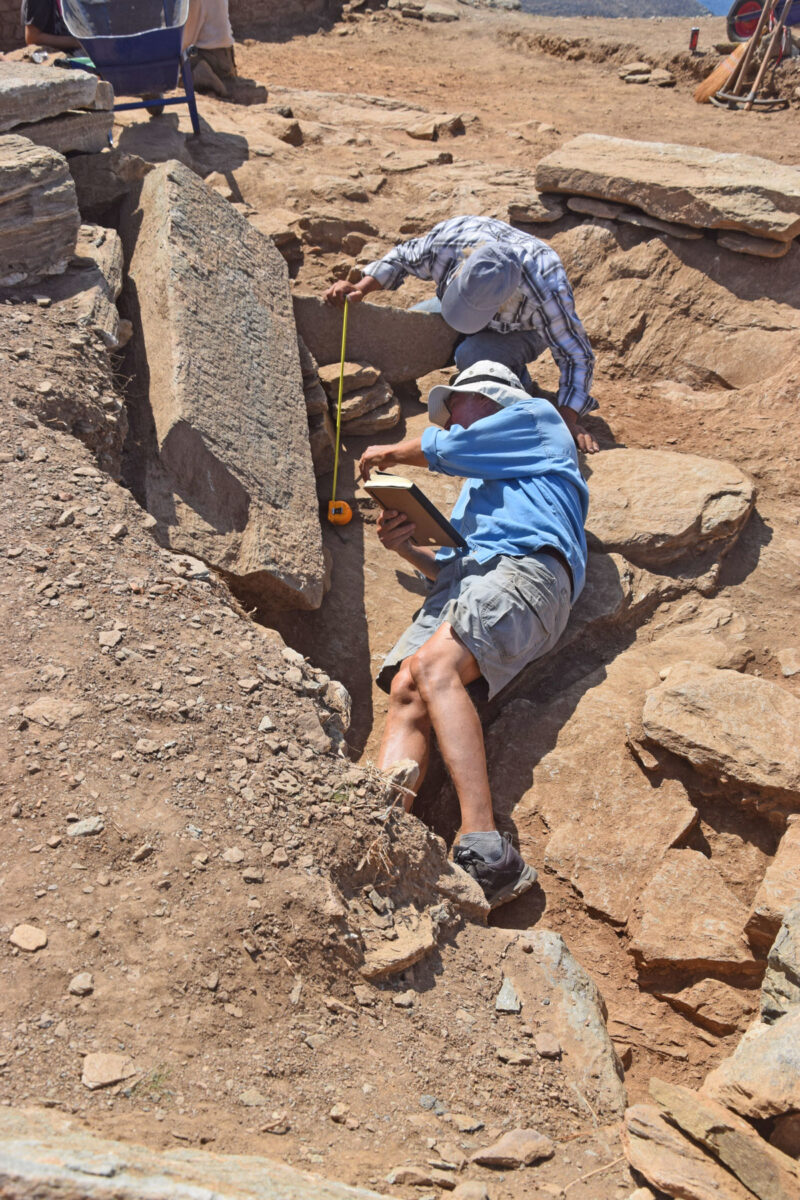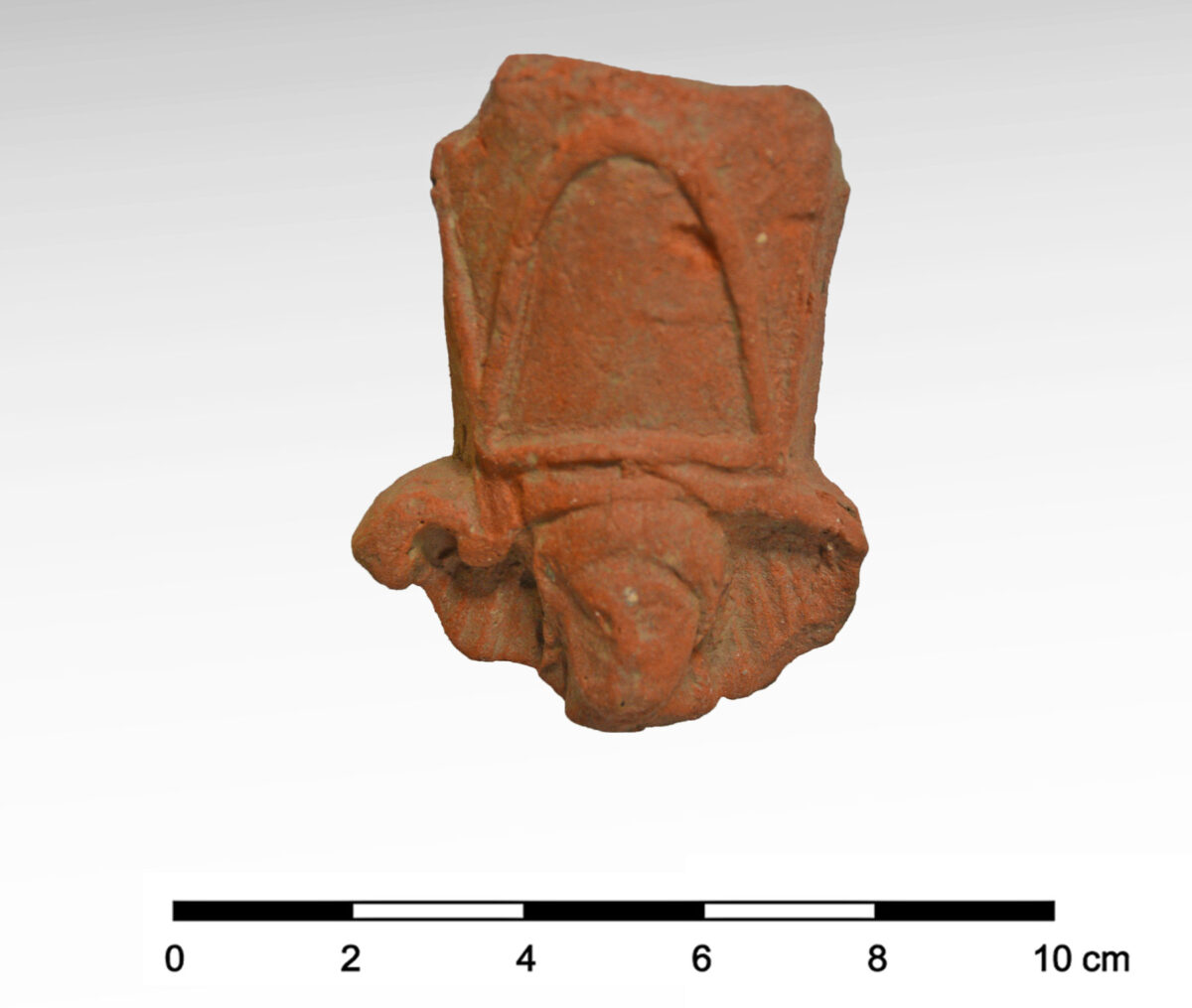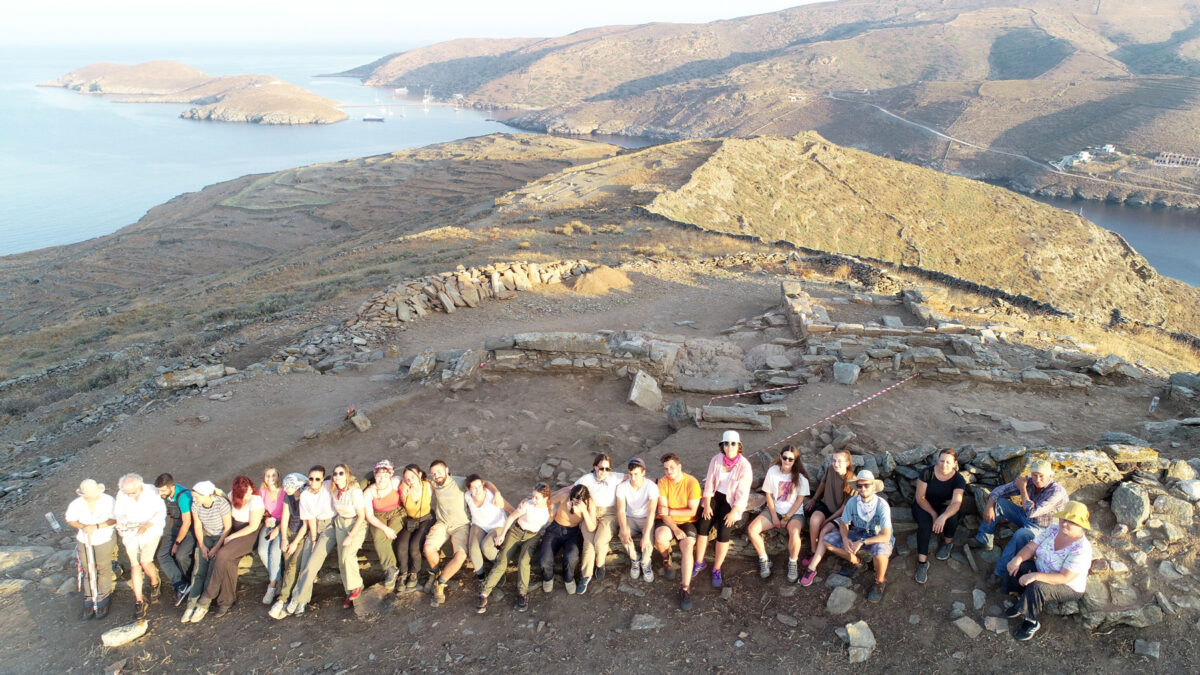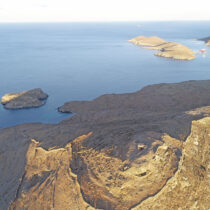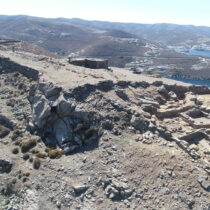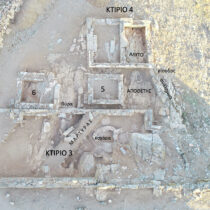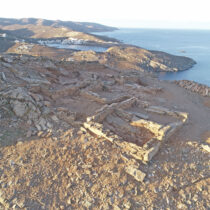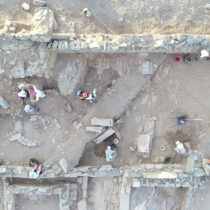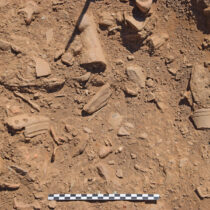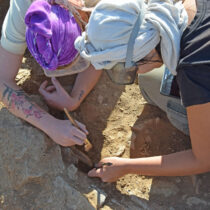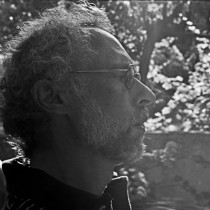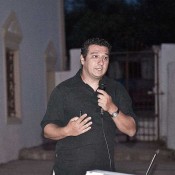This year’s excavation on the Acropolis of the ancient city of Kythnos (today’s “Vryokastro”), a collaborative project of the Section of Archaeology of the Department of History, Archaeology & Social Anthropology of the University of Thessaly and the Ephorate of Antiquities of the Cyclades of the Ministry of Culture and Sports took place from August 22 to September 25, 2022, with particularly significant results.
The city of Kythnos was inhabited continuously from the 12th century BC to the 7th century AD (fig. 1). This year’s work focused on the excavation of the Acropolis buildings which came to light in 2021. The southern part of the citadel probably served military needs, undoubtedly also those of the Macedonian garrison installed on Kythnos in 201 BC by Philip V (fig. 2, left). This year only limited cleanings were carried out in this area, bringing to light however a series of cisterns, which apparently provided water reserves in time of siege.
The northern part of the plateau is occupied by a sanctuary, which was identified last year with certainty with that of Demeter and Kore (fig. 2, right, fig. 3-4). Here, research continued in three buildings (nos 3, 4 and 6) as well as in hypaethral areas.
Initially, the research of the two-roomed Building 4, measuring 7.50 X 5.70 m., which is undoubtedly identified with a temple of the Classical period, was completed. In the Western space, in 2021, three containers formed by vertical stone slabs were found, partially placed inside a layer of ash characterized by numerous burnt animal bones. From the back (East) room (“adyton”), many bones of small animals were also collected, including several jaws from piglets, lamps with multiple nozzles, as well as clay female figurines.
Between this temple and the elongated Building 3 further to the South, there are two almost square small buildings, 5 and 6, with opposed entrances (see figs 3-4). This year, the research of the western Building 6 (4.85 x 4.25 m.) was completed. Its interior is formed internally on at least three levels. It seems that this is where the main stepped access to the sanctuary was originally located, which was blocked in Roman times and incorporated into Building 6, probably to serve worship needs (perhaps as a simulation of the descent to the Underworld?).
Moreover, excavation was completed around Building 5 (see figs 3-4), which may probably be identified with a second smaller temple (3.80 X 3.30 m.), since in 2021, numerous votive offerings were uncovered sealed beneath its last floor. A paved floor was revealed in the narrow corridor between Buildings 4 and 5, suggesting that these two buildings were at some point in simultaneous use.
Excavations in 2022 focused on Building 3, which measures 21 meters in length and 8.50 meters in width. It is characterized by trapezoidal masonry and presents a monumental entrance in the middle of the elongated North wall (see figs 3-5). This year, two strips of rectangular squares were excavated inside the building, allowing a better clarification of the organization of space. It is noteworthy that most of the votive offerings of the sanctuary come from the abandonment fill of this building (figs 6-9). In the eastern part of the edifice, a series of zig-zag niches of the natural rock were revealed, bordered also by walls, which seem to have formed spaces and containers for the storage and/or deposition of votive offerings, as in these areas there was a strong concentration of finds of all categories (figs 10-12).
In this part of the building, a stone horseshoe-shaped hearth was also discovered, approx. 2.50 × 2 m, (fig. 10) filled with ashes and scattered mudbricks, as well as burnt animal bones and a significant concentration of votive offerings. The whole configuration here raises doubts about whether this part of the building was roofed. A large concentration of votive offerings was also observed in a strip along the back (southern) wall of the western half of the building. In this wall, flat stones are set internally at regular intervals and at the same low level, indicating the presence of a wooden shelf on which votive offerings must have been placed (fig. 13).
Between the two temples (nos 4 and 5) and the elongated Building 3, a retaining wall was revealed, providing an entrance to the temenos from the East, which at some point, during the long course of use of the sanctuary (7th century BC to 3rd – 4th century AD), was blocked by the formation of an extensive “votive deposit” which contained innumerable offerings (fig. 4). The research here was completed this year bringing to light many hundreds of intact or almost intact finds, mainly clay figurines and multi nozzled lamps.
The exact use and dating of all the uncovered buildings will be determined when the study of the finds and related excavation data will be completed. In general, the search of the interior of the buildings led to the discovery of numerous votive offerings. The bulk, however, comes from Building 3 and from the “votive deposit” (figs 14-24). Many hundreds of Archaic-Hellenistic clay figurines were collected (the intact or almost intact exceeded 2.000), mostly female (figs 14-16) and children’s (fig. 17), fewer male, especially actors and reclining (fig. 18), Hermaic stele – see fig. 9 – , piglets, turtles, lions, rams, birds, fig. 19, etc. Among the finds there were also numerous lamps of Archaic-Roman times (fig. 20), multi nozzled lamps (fig. 21), ring-shaped “kernoi” with miniature vases attached to them, a number of miniature hydriai detached from ritual vessels (fig. 22), pottery of excellent quality, mainly Attic black- and red-figure (fig. 23), but also other centers of production (Corinthian, Cycladic and East Aegean). The votive offerings include some bronze, silver (fig. 24), bone and glass jewellry, marble and alabaster perfume vases and pyxides.
Some Roman bronze coins were also found (e.g. a sestertius of Trajan, after 106 AD, fig. 25 above, and a coin of Diocletian of ca. 285 AD, fig. 25 below). However, of special interest is a Kythnian silver coin with the head of Apollo on the obverse and the lyre on the reverse, since the Kythnian coins of the Hellenistic period known to date are all of bronze (fig. 26).
Several clay vessels, mainly of Roman times, deriving both from the interior of the temple (Building 4), as well as from the various fills inside Building 3 and from the “votive deposit”, may be identified as ritual utensils since they bear incised inscriptions of women which offered them to Demeter and Kore (fig. 27). For various reasons we may provisionally suggest that Building 4 was the temple of Demeter, while the adjacent smaller Building 5 was that of Kore.
Immediately behind the entrance of Building 3, moved from its original location, a monumental (1.43 X 0.47 X 0.21) inscribed base was found, perhaps of the late Hellenistic or Roman period, reading «Νηρηίς δαμιουργός», which probably refers to an official of the sanctuary (fig. 28). The use of the Doric dialect confirms once again its parallel use with the Ionic dialect in Kythnos.
Many of the aforementioned votive offerings also refer directly or indirectly to the worship of the two deities, as do various additional finds, such as a second figurine of a basket-bearer (fig. 29) or several fragments of imported Eleusinian kernoi.
The five-year excavation program at Vryokastro, Kythnos (2021-2025) is conducted under the direction of Professor of Classical Archaeology Alexandros Mazarakis Ainian and the Ephor of Antiquities Dr. Dimitris Athanasoulis. The research of the University of Thessaly and the Ephorate of the Cyclades is also supported by the Secretary General of the Aegean and Island Policy, the Municipality of Kythnos, the Association of Friends of the Archaeological Museum of Kythnos, the captain of the ship “MARMARI”, and mainly the generous sponsor of the excavation programme, Mr. Thanasis Martinos. The interdisciplinary research team of archaeologists, architects, conservators, zooarchaeologists, scientists, etc. was supported by 33 students of archaeology of the University of Thessaly, as well as 2 students from France (fig. 30).
* Digital photo editing: Eva Kolofotia.
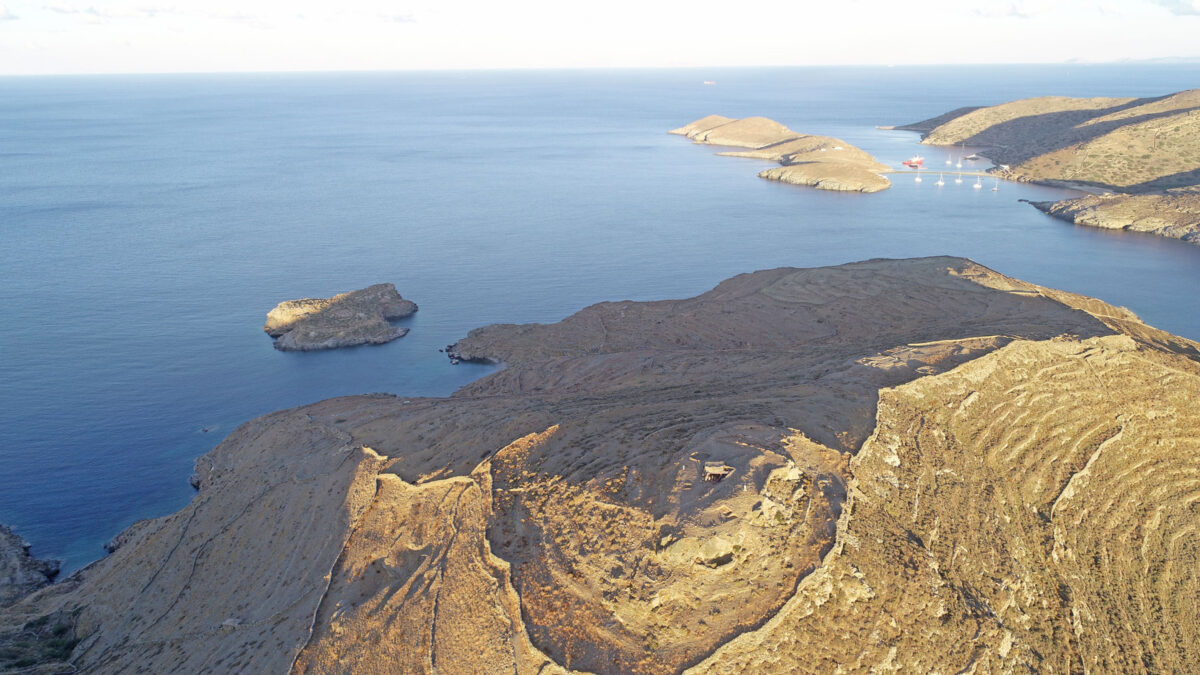
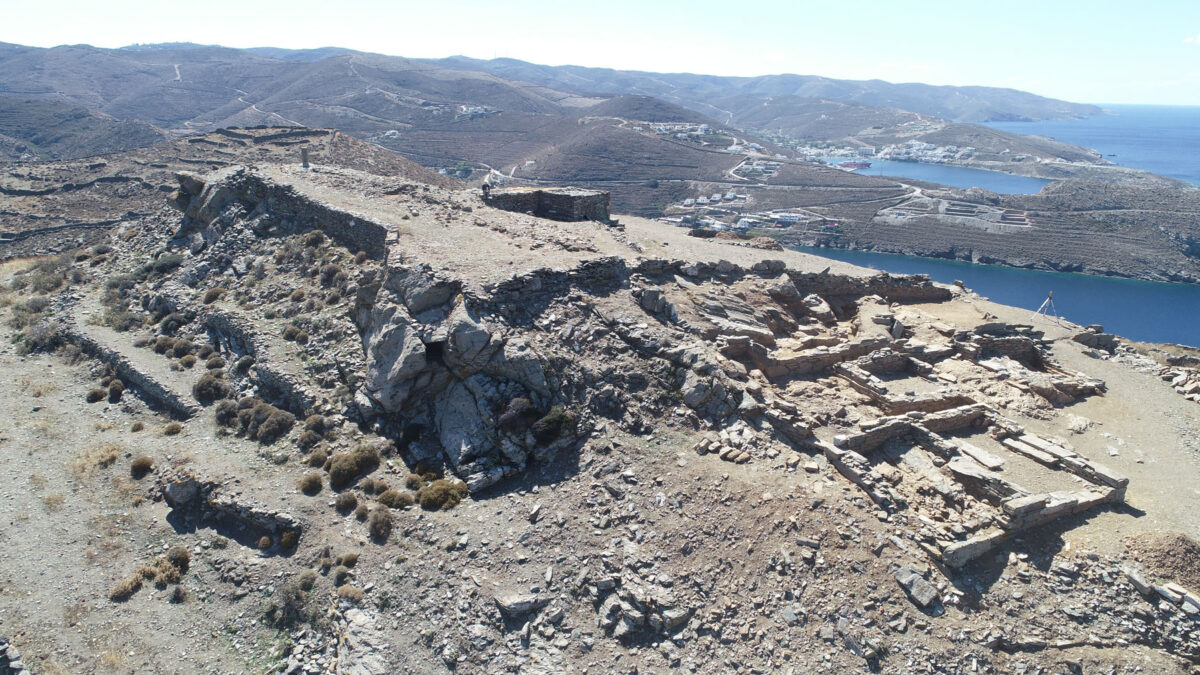
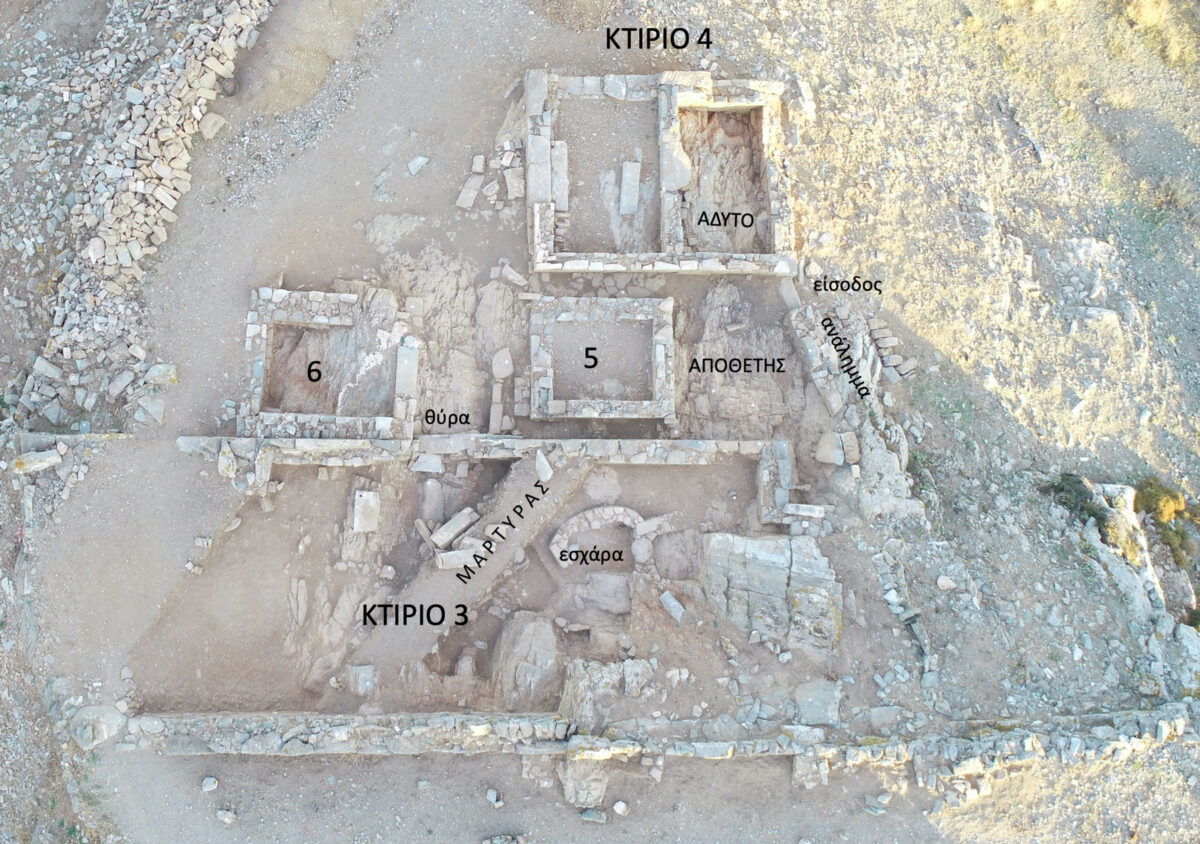
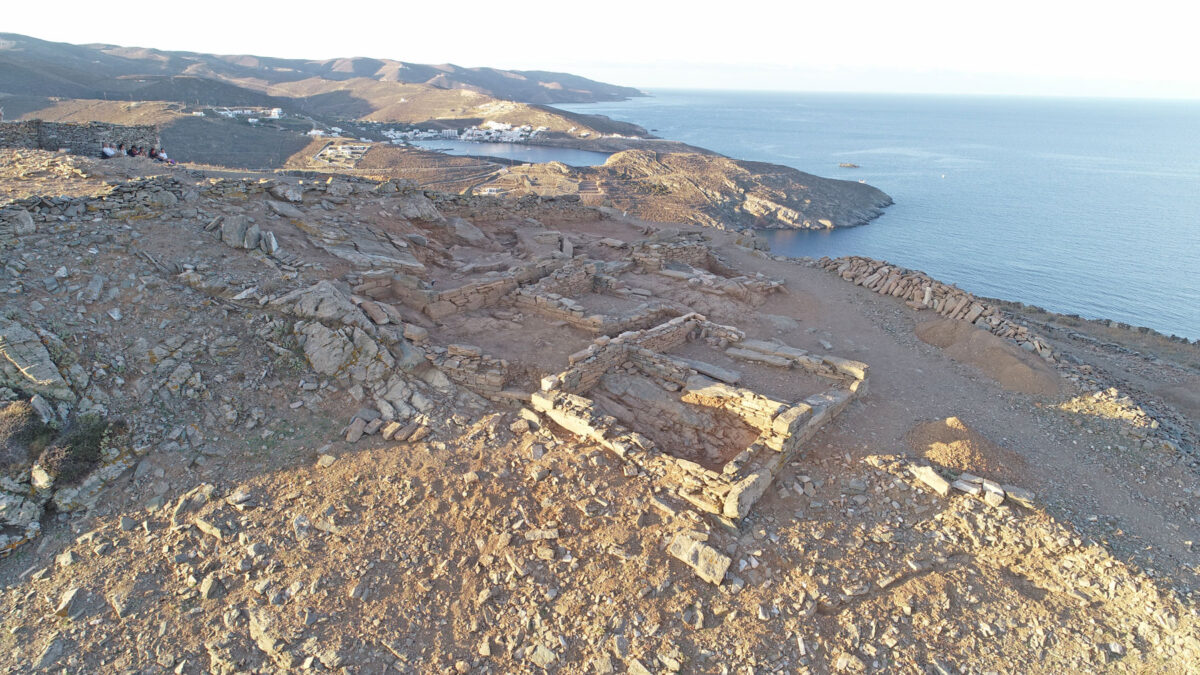
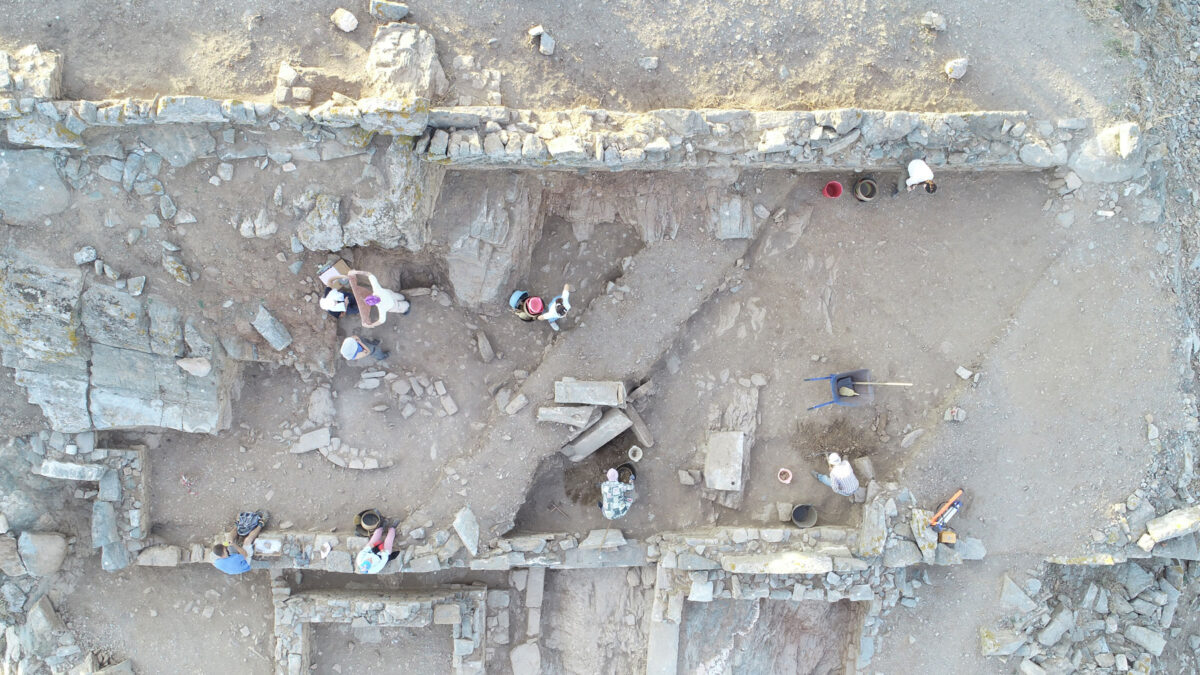
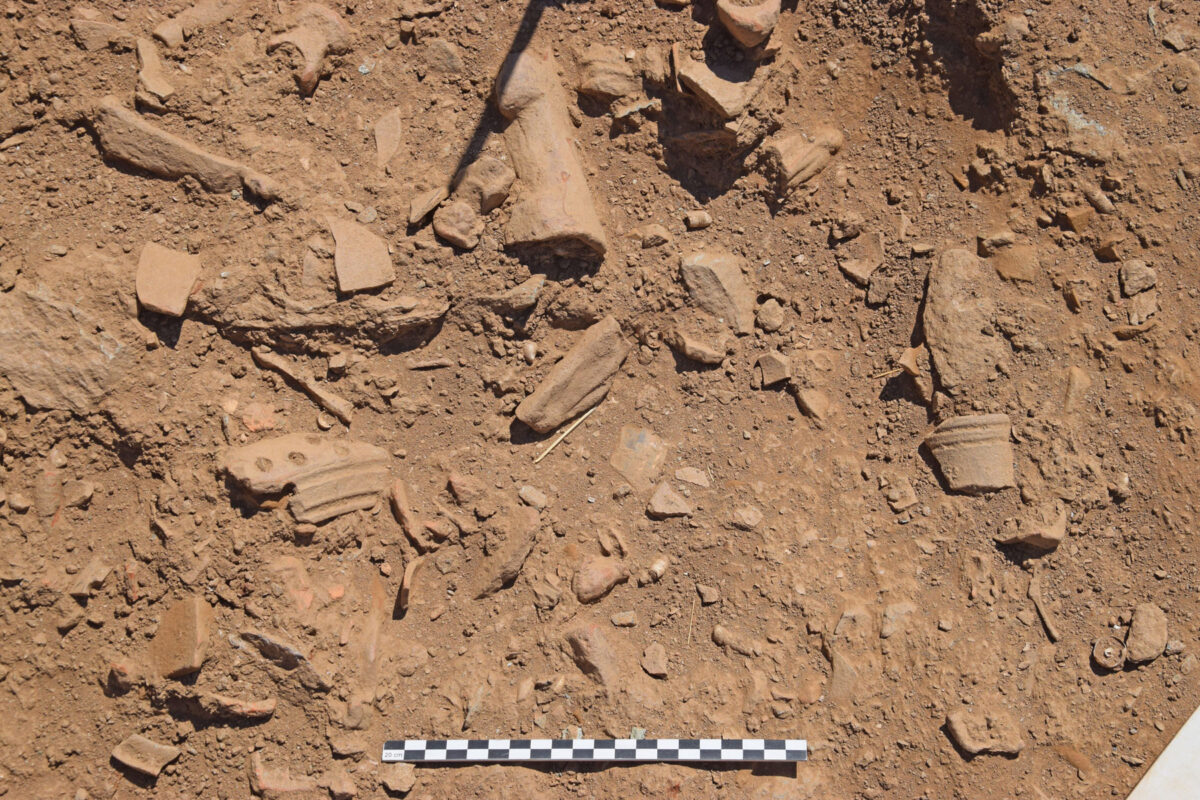
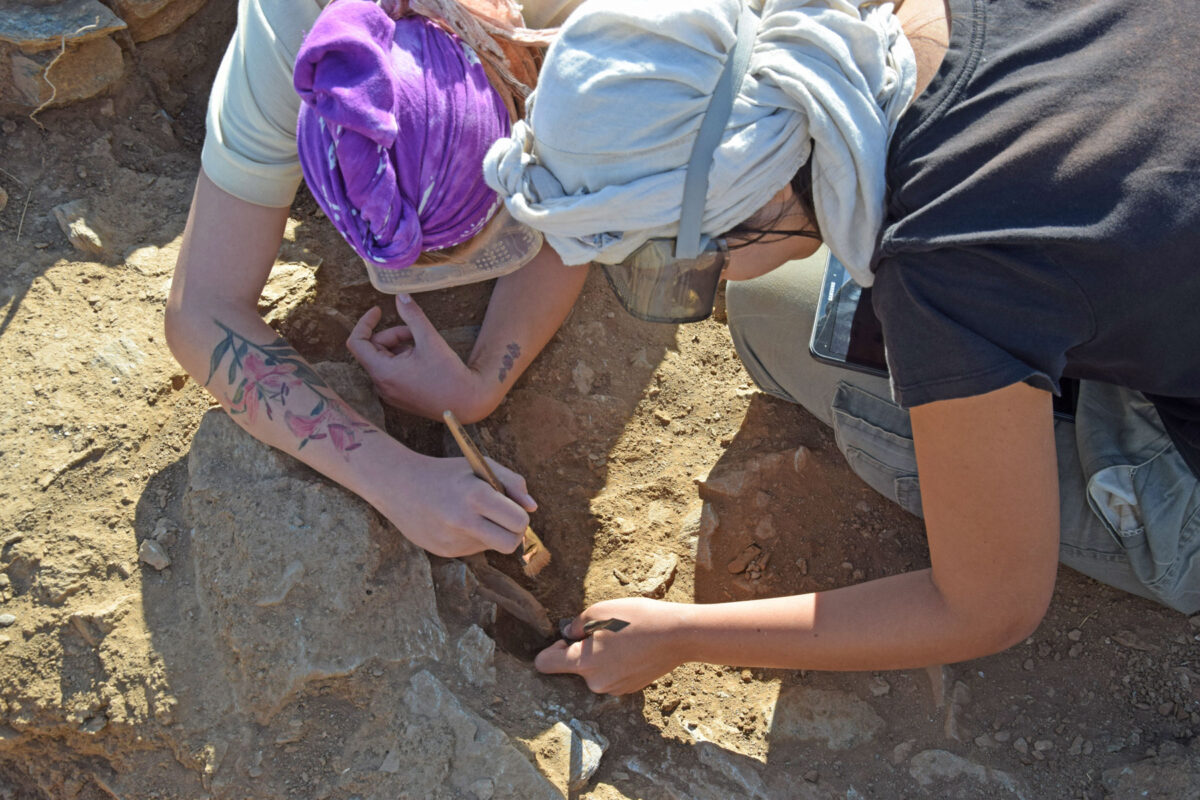
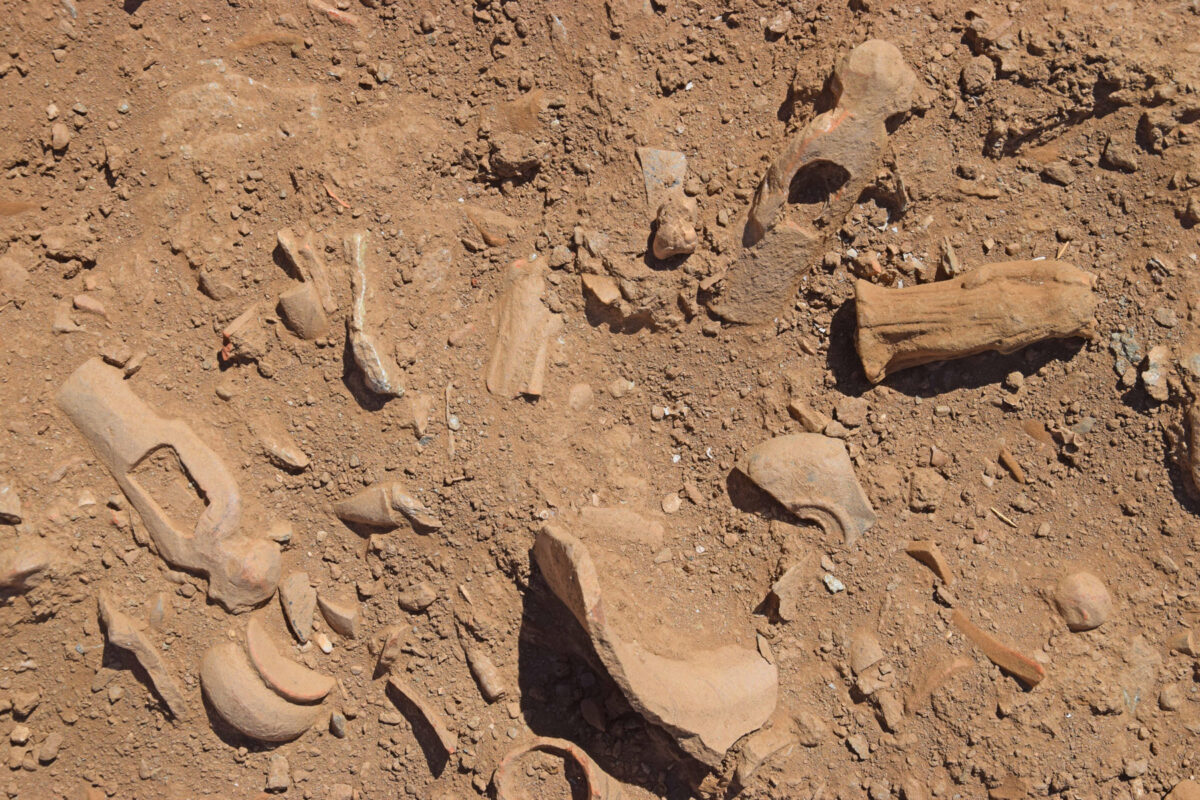
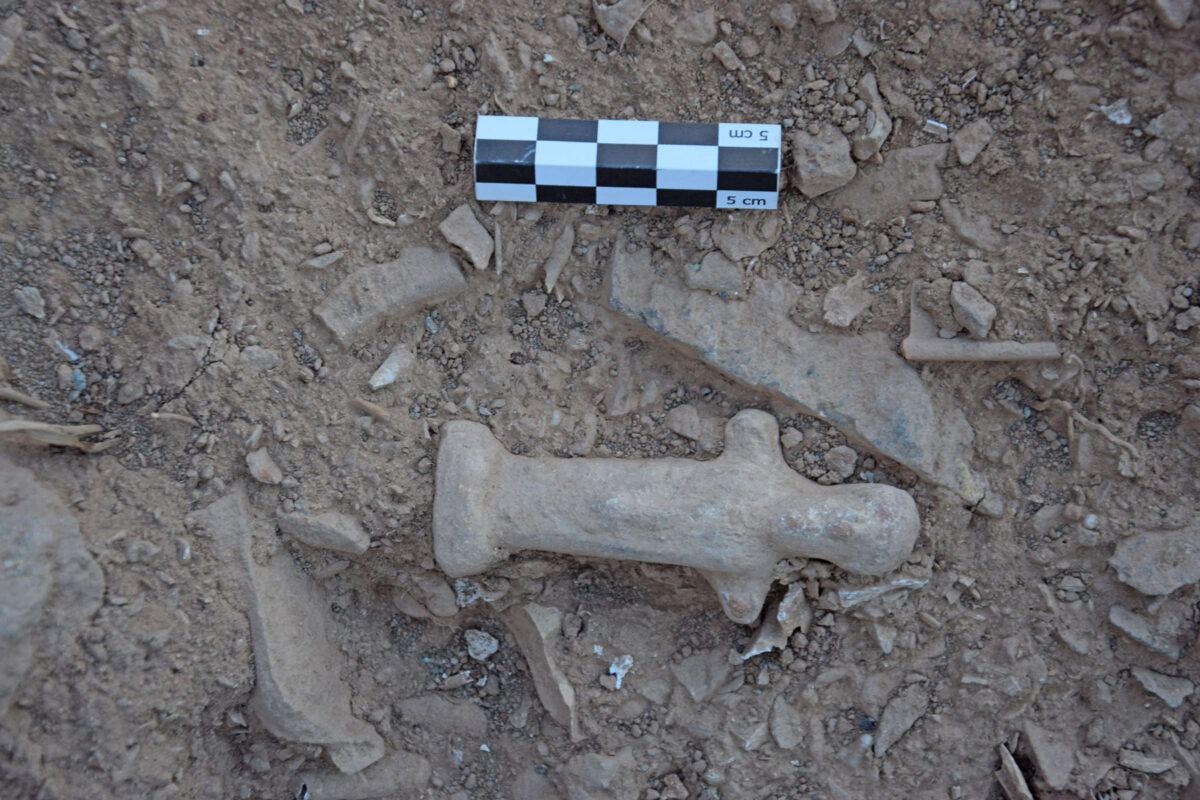
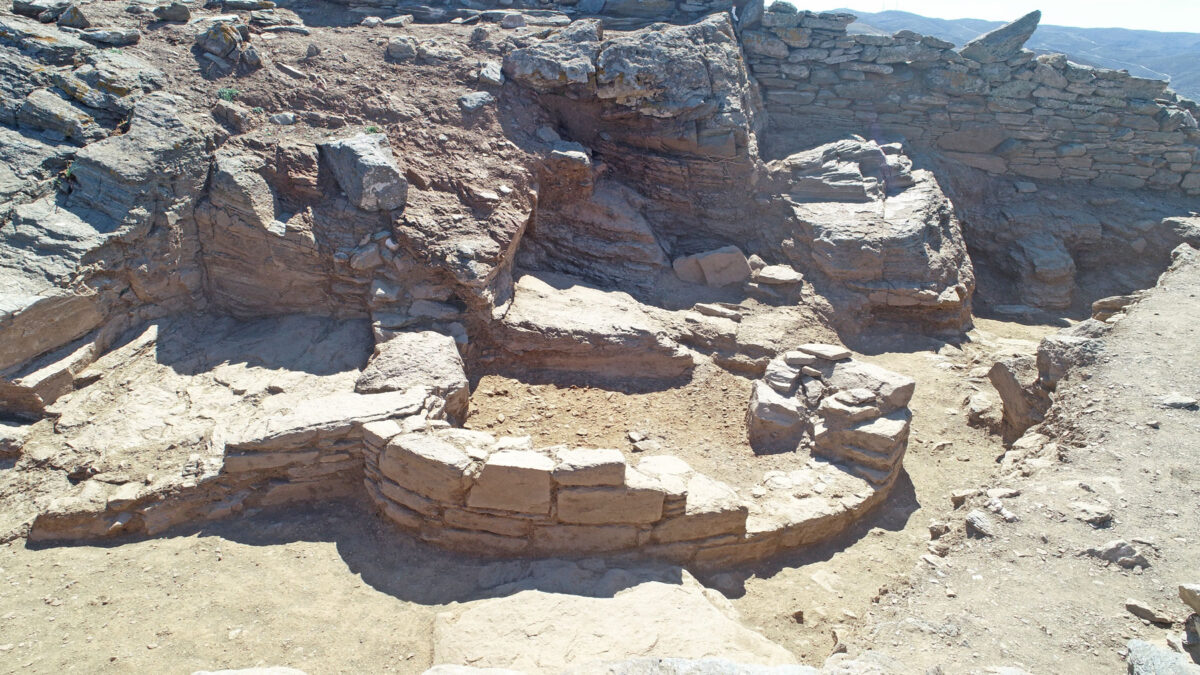
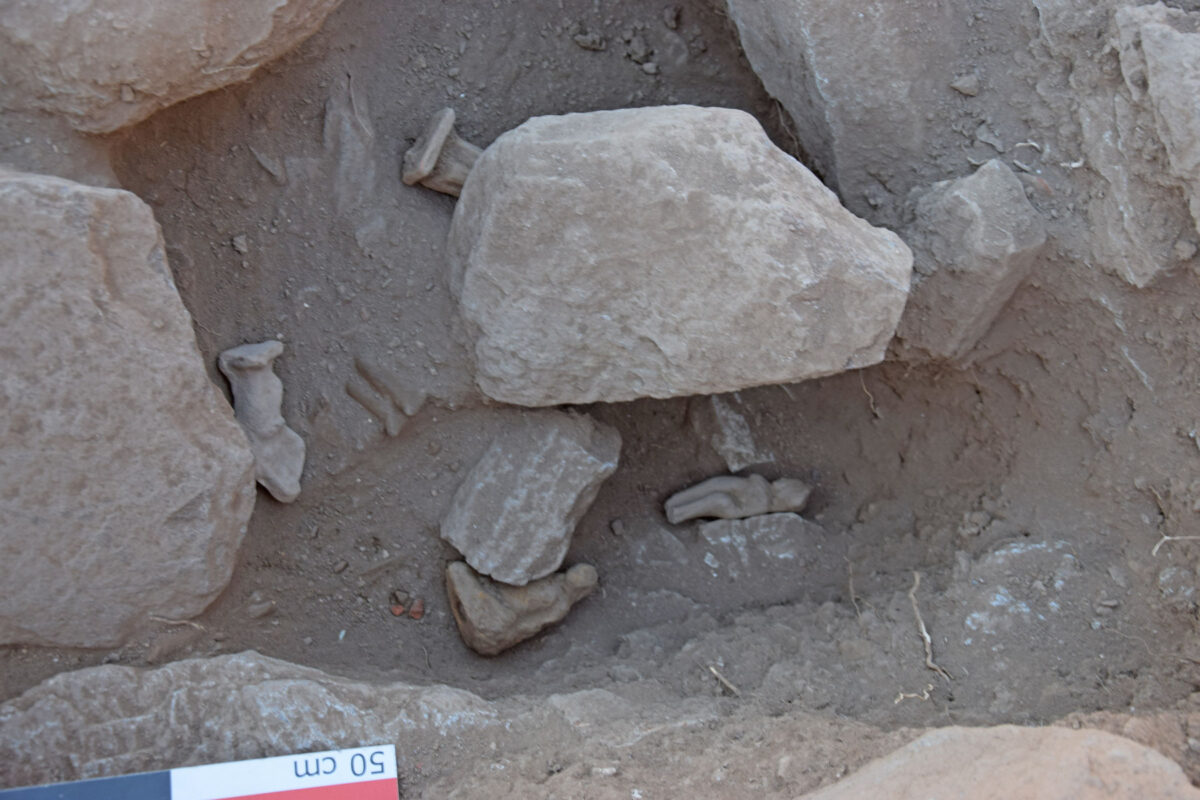
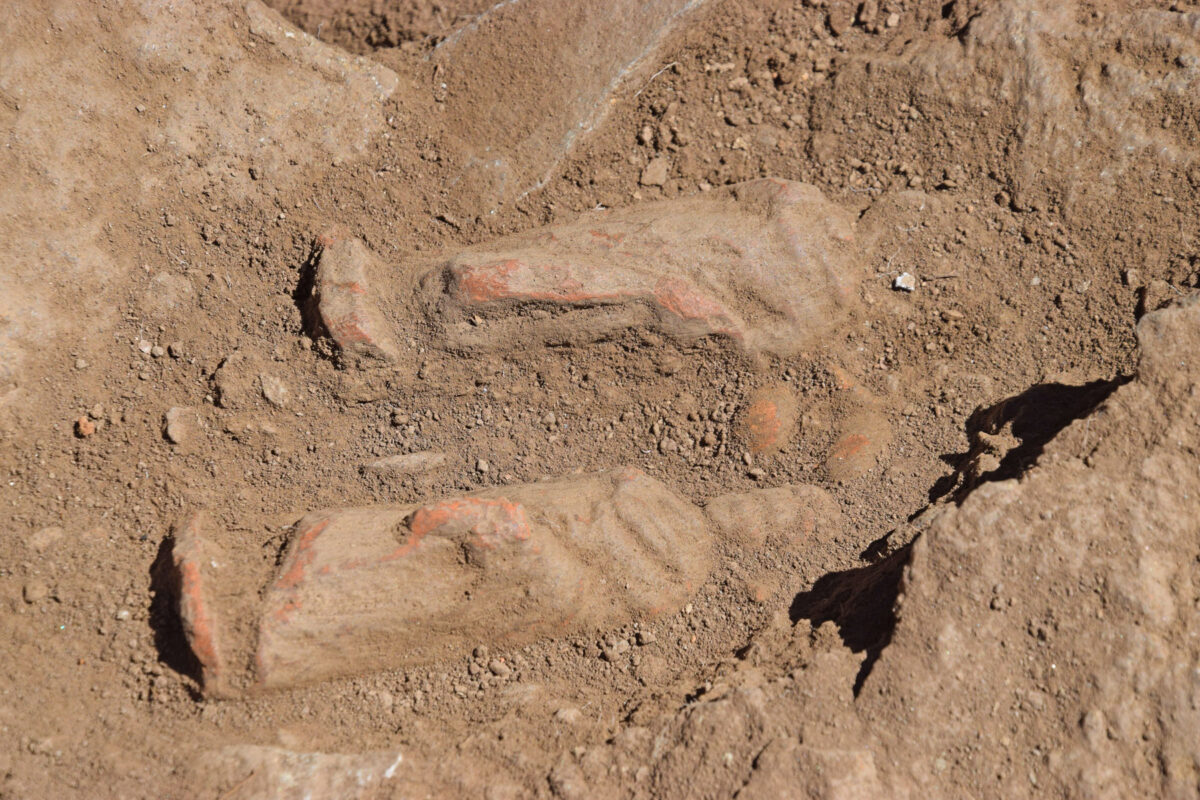
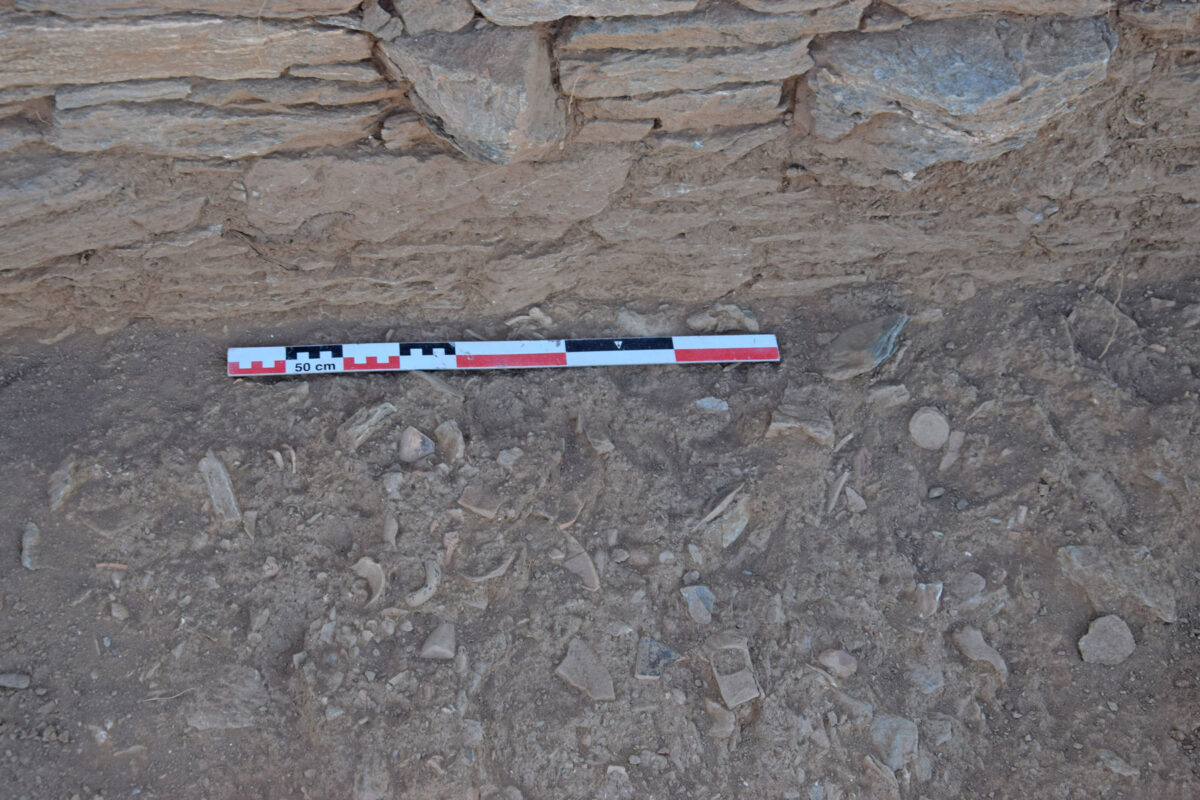
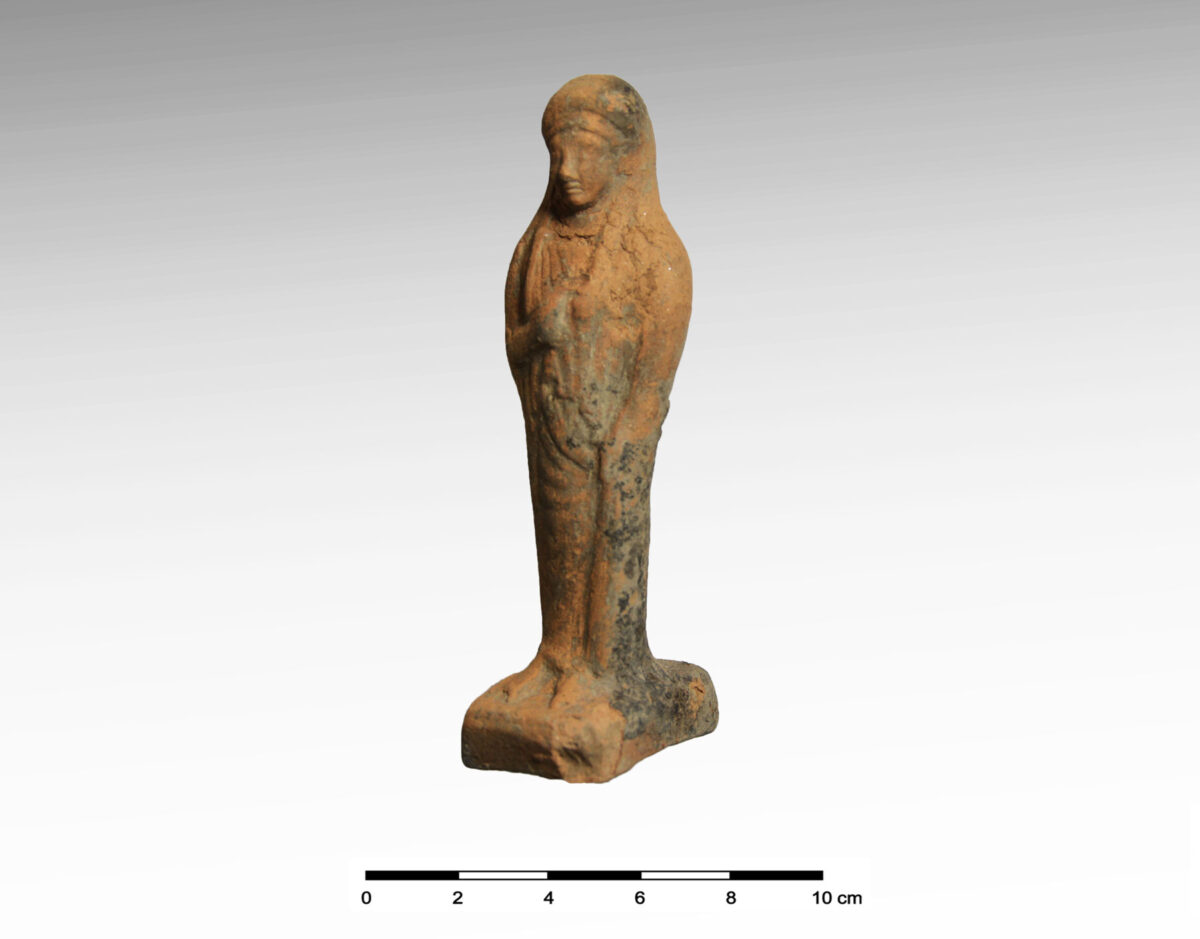
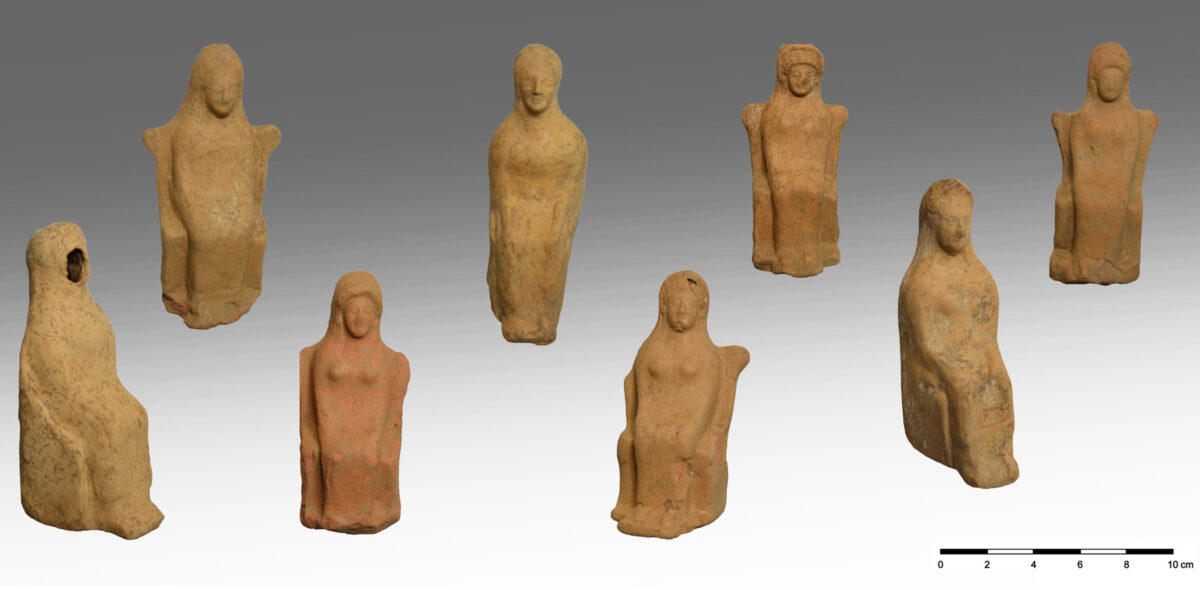
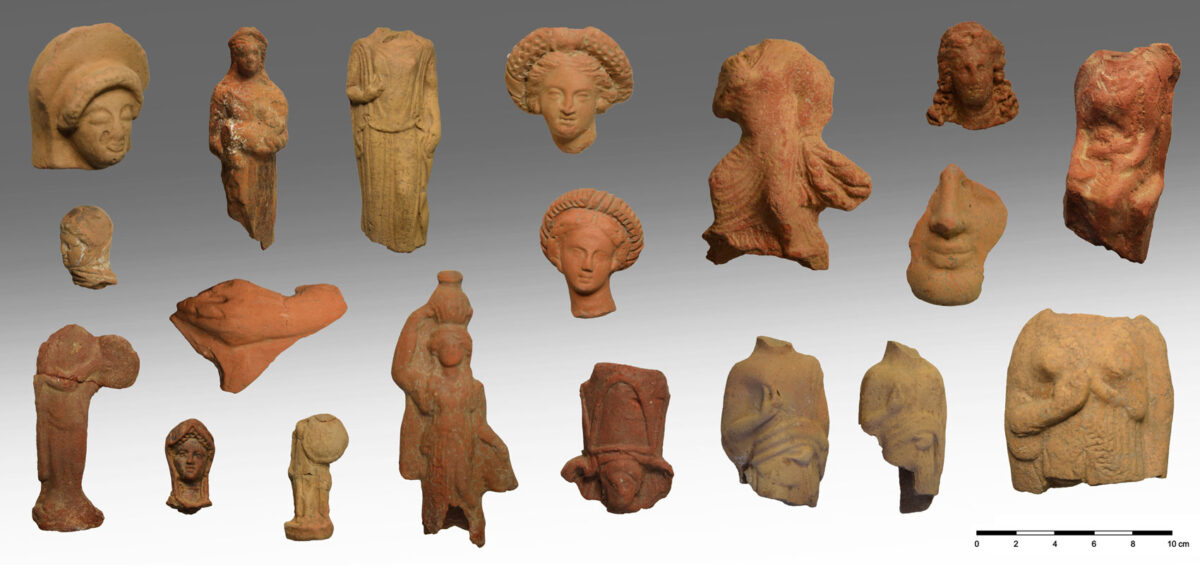
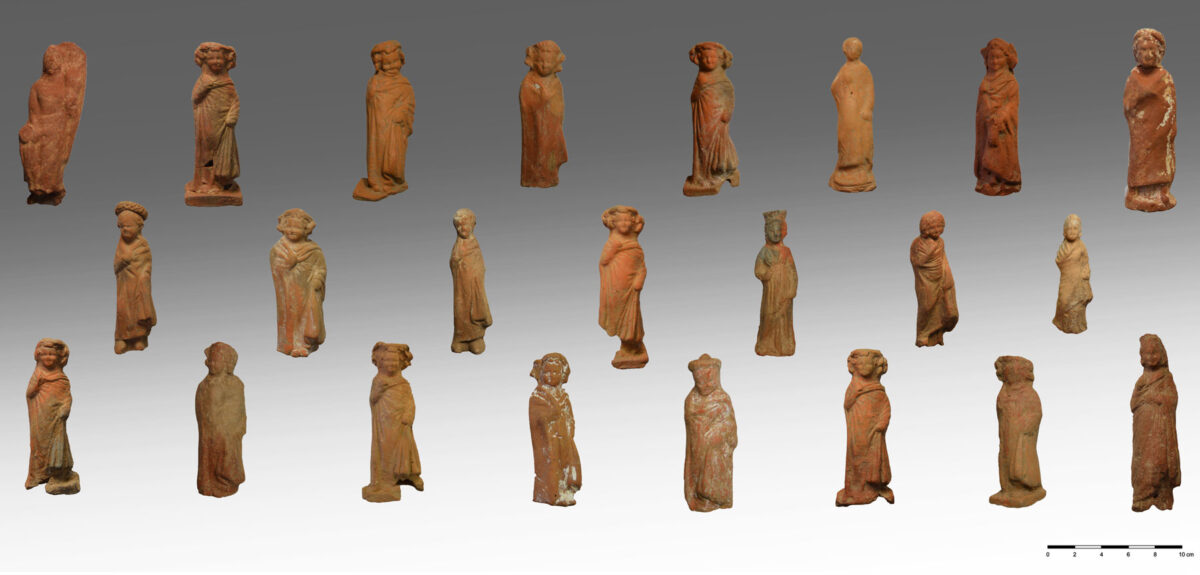
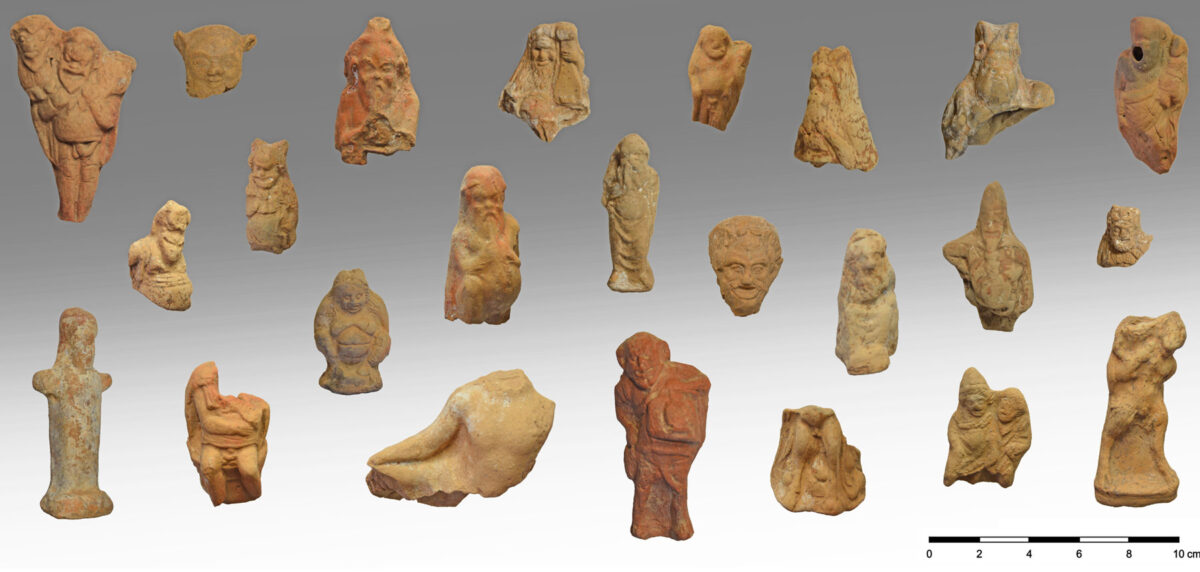
![Fig. 19. Animal figurines (piglets, turtles, lions, rams, birds, cicadas [top right], etc.)](https://www.archaeology.wiki/wp-content/uploads/2022/12/Vryokastro_2022_19-1200x569.jpg)
